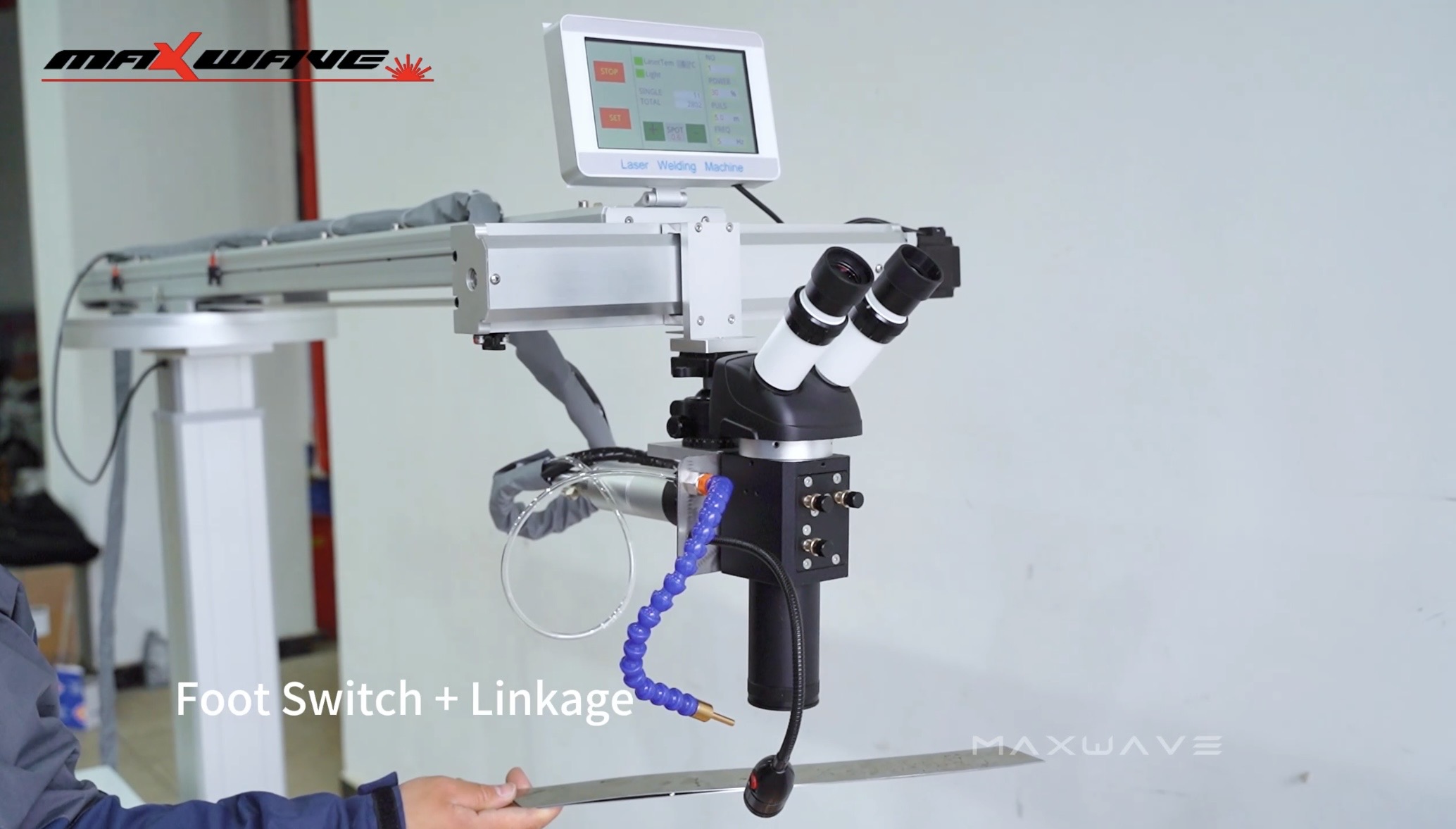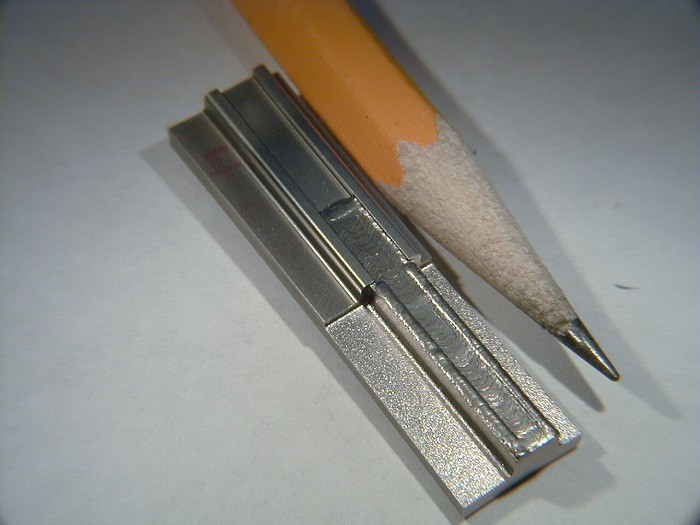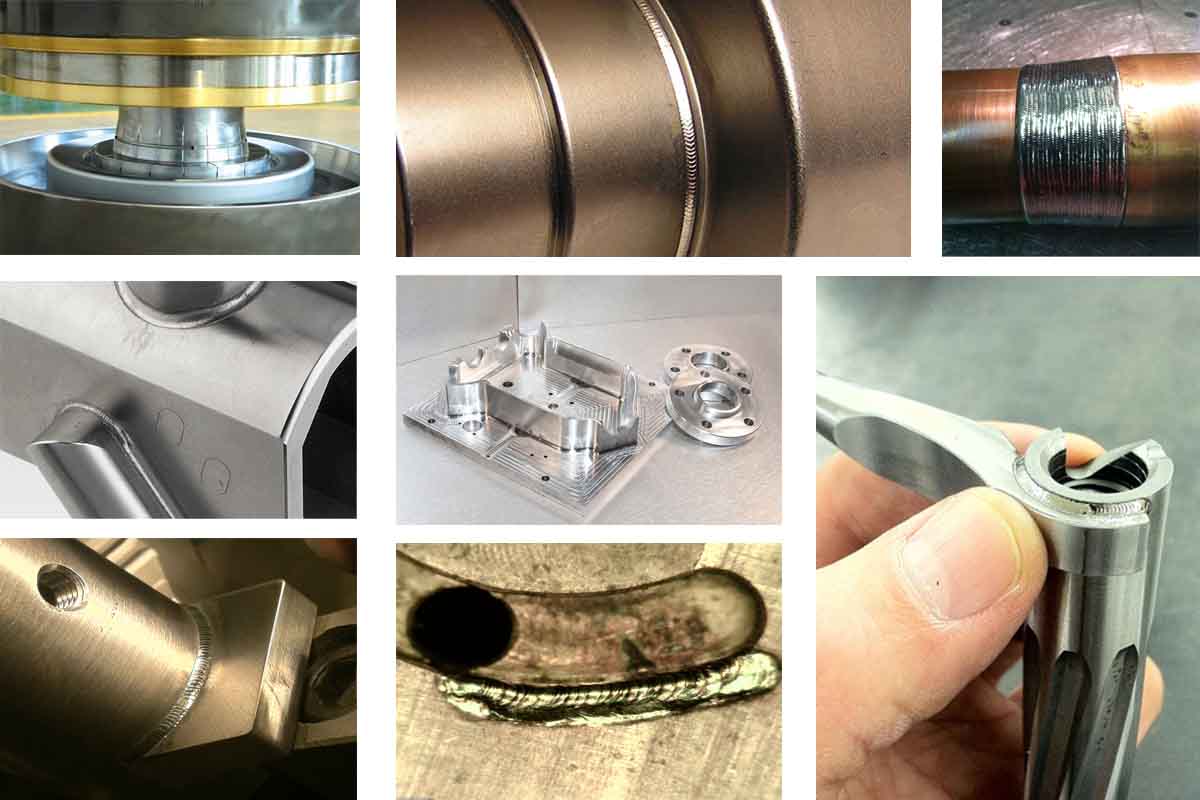Precision matters in mold repair—and choosing the right welding machine can make all the difference. Whether you’re restoring intricate details or reinforcing complex, deep sections, the tools you use directly impact quality, speed, and cost. In this article, we explore the key differences between fiber laser and CO₂ laser welding, uncovering which one truly excels in precision repair. If you’re in the business of molds or advanced manufacturing, this is a comparison you need to see.
Mold Repair: Fiber vs. CO₂ Welding
| Category | Fiber Laser | CO₂ Laser |
|---|---|---|
| Materials | Fiber laser handles metals (steel, aluminum, stainless steel, reflective alloys). | CO₂ suits non-metals (wood, acrylic, glass). |
| Wavelength & Precision | 1064 nm → micron-level accuracy. | 10.6 μm → lower precision, wider focus. |
| Efficiency | 70–90% conversion rate. | 5–10%, much higher power consumption. |
| Maintenance | No consumables are required and the service life is up to 100,000 hours. | Consumables require replacement, life span is 2,000–10,000 hours. |
| Speed & Thickness | Very fast on thin metals (steel ≤ 20mm, up to 1417 ipm). | Better for thick metals (up to 100mm) and non-metals. |
| Applications | Automotive parts, electronics. | Signs, crafts, packaging molds. |
From my experience, your choice between fiber and CO₂ laser welding machine depends on what you need to cut. Fiber lasers excel in precision, speed, and metal cutting. I recommend CO₂ lasers for thick materials and non-metal jobs where you want smooth finishes.
Advantages of Fiber Laser Welding for Precision Mold Repairs
Minimal Heat-Affected Zone (HAZ)
Fiber laser welding machine offers a major advantage by keeping the heat-affected zone (HAZ) minimal—typically just 0.008 to 0.012 inches deep. This helps protect the base material and significantly reduces the risk of warping. In contrast, traditional TIG welding can create a HAZ as deep as 0.15 inches, which increases the chances of material distortion and damage.
Better Flexibility for Complex Designs
Based on my experience, fiber laser welding machine are excellent for intricate mold designs, steep angles, and deep sections. They enable precise, non-contact welding from a distance. Systems like the MaxWave MW-QW200 are designed to handle complex shapes using fiber delivery, and when combined with a five-axis motion system, they can access and repair areas that are otherwise hard to reach.
Strong and Cost-Effective
These lasers can deliver strong, smooth welds while using minimal assist gas, which means less wear on the equipment and reduced maintenance needs. Their durable design allows for precise repairs time and time again, with less warping, lower energy consumption, and greater overall welding efficiency.
Precise Mold Repairs
Fiber laser welding machines offer repair precision down to the micron level, leaving virtually no holes, dents, or added stress on the material. For example, LaserStar’s micro-welding systems can produce weld seams as thin as 0.004 inches, ensuring accurate, consistent results even on the smallest mold components.
Faster Work
I can tell you that fiber laser welding significantly shortens repair time. Pulse systems help speed up the welding process, with no need to preheat the metal or perform extensive post-weld work. This allows for quick crack repairs while maintaining mold precision and minimizing downtime.
Works on Many Materials
Fiber lasers can weld a wide range of metals—aluminum, steel, stainless steel, and even dissimilar metals. I’ve seen this technology prove valuable across many industries, including automotive and electronics manufacturing.
Green Solution
These fiber laser welding machines are energy-efficient and reduce material waste, making repairs more environmentally friendly by operating with less heat. Compared to traditional methods, I’ve found they lower costs while offering a greener solution for mold repair.
Advantages of CO₂ Laser Welding for Mold Repairs
Clean Edges Mean Less Finishing Work
CO₂ lasers welding machine create smooth edges that cut down on touch-up work after welding. I’ve found this helps save time when working with thick materials. The clean cuts make the next steps in production much simpler.
Works on Many Materials
CO₂ laser systems can handle metals, plastics, wood, and some organic materials. From my experience, this makes them perfect for shops that need to weld or cut different types of materials in the same project.
Affordable for Small and Medium Projects
CO₂ laser systems cost less than fiber laser welding machine. They have lower startup costs, which I recommend for businesses with small to medium workloads. You can get good results from basic CO₂ systems without spending as much as you would on newer tech.
Exact Heat Control for Careful Mold Fixes
CO₂ laser welding machine focus heat just where you need it. This lowers the risk of warping or damage. I find this crucial when fixing molds that must keep their exact shape and size.
Both Cuts and Welds
CO₂ lasers are good at cutting and welding. They cut thin metals up to 3 mm and thicker non-metals up to 20 mm. Based on my work, this dual use makes them handy for many repair and making tasks.
No-Touch Repairs Protect Molds
CO₂ lasers don’t touch the mold during repairs. This keeps stress off the mold. I’ve seen how this helps keep detailed or fragile parts safe while making the surface look better too.
Proven Track Record with Good Support
CO₂ lasers have been used in industry longer than fiber lasers. This means more skilled workers know how to use them. I’ve found that getting help with problems is easier, which makes long projects run smoother.
Practical Applications in Mold Repair Welding
Precision Mold Repairs with Fiber Lasers
I’ve found fiber lasers welding machine work well for exact mold repairs in many industries. Main uses include:
- Micro-Welding for Intricate Components: Tools like the LaserStar FiberStar 8900 make welds as small as 0.025 mm. They fix tiny features like sealing edges or thin walls without warping them. I consider this vital for aerospace, medical, and electronics molds.
- Heat-Sensitive Mold Repairs: These laser welding machine create very little heat during welding. This protects sensitive materials and prevents warping in tough molds.
- On-Site Repairs: The small size of fiber lasers lets repair teams work right where the mold is. This cuts downtime for complex molds used in injection molding or electronic device tooling.
General Mold Repairs with CO₂ Lasers
I recommend CO₂ lasers for bigger, less detailed mold fixes, mostly for large molds or non-metal materials:
- Restoration of Larger Mold Features: CO₂ lasers work best on thick materials and molds under heavy stress, like those in car and plastic manufacturing.
- Wider Heat Distribution for General Repairs: These systems spread heat across bigger areas. This makes them good for fixing wear or damage on large injection molds.
- Cost-Effective Solutions: CO₂ laser welding machine cost less upfront. I think they’re more budget-friendly for shops doing basic repairs or working with plastic molds.
Advantages by Repair Needs
- Precision vs. General Repairs: For tiny, exact mold fixes, I prefer fiber lasers. For bigger, simpler repairs on large molds, CO₂ lasers work better.
- Portable Solutions for Complex Tasks: Fiber lasers like the MaxWave Mold Laser Welding Machine offer useful features. These include five-axis linkage and multi-angle welding for flexible fixes. Portable CO₂ laser systems make field repairs easier on heavy molds without taking them apart.
Mold Repair and the Environment Impact
Energy Efficiency
I find that fiber lasers use energy much better than CO₂ lasers. They turn up to 40% of electrical energy into laser light, while CO₂ lasers only convert 10-20%. This cuts energy use by up to 70%. You’ll save money on operations and reduce the carbon footprint of precision mold welding.
Waste and Emissions
Fiber laser welding machine generate minimal waste and have a low dependency on gases like helium, CO₂, or nitrogen, which helps reduce greenhouse gas emissions and operating costs. In contrast, CO₂ lasers can release particles, microplastics, and volatile organic compounds during operation, contributing to environmental pollution.
Longevity and Maintenance
I’ve seen that fiber laser welding machine last much longer—often over 100,000 hours—with very little upkeep needed. CO₂ lasers need frequent gas refills and regular maintenance. This creates more waste and harms the environment more over time.
Resource Consumption
Fiber lasers rely less on limited natural resources, which I think is a major benefit. Helium, which CO₂ lasers need, is becoming harder to find. Using fiber laser technology reduces dependence on these dwindling resources. This makes it a greener choice.
Based on my assessment, fiber lasers are clearly the better choice for sustainability. Their energy efficiency, low waste, minimal resource use, and green design make them essential for precision mold welding with less impact on our environment.
Conclusion
Choosing between fiber laser and CO₂ laser welding ultimately comes down to your repair needs. For high-precision, low-distortion, and energy-efficient results—especially on metal molds—fiber lasers clearly lead the way. CO₂ lasers still hold value for certain non-metal applications, but in the world of detailed mold repair, fiber technology offers superior performance and long-term reliability. As industries move toward smarter, cleaner solutions, investing in the right laser system could be the key to staying ahead. Reach out today and let’s help you make the best choice for your business!





Recent Comments